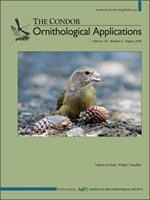One goal of Habitat Conservation Plans is to protect viable populations of animal species. Management actions included in such plans often focus on vegetation restoration to benefit the target animal species. Yet, such restoration activities are often uninformed by fine-scale animal survey data. Using the California Gnatcatcher (Polioptila californica californica), we demonstrate how survey data can guide restoration toward the goal of improving gnatcatcher viability by identifying habitat conditions most favorable for gnatcatcher occupancy. We found that gnatcatcher presence and colonization probabilities tripled as the coverage of coastal sagebrush (Artemisia californica) increased from 10% to 40%. Coastal sagebrush was more likely to be present at low elevations, and was most closely associated with soil texture of 5%–20% clay, 40%–70% sand, and 20%–40% silt. Higher gnatcatcher extinction probabilities were associated with closed, dense habitat; optimal conditions were between 30% and 40% openness, creating a slightly closed canopy. Open habitat was associated with southern aspects, shallow slopes, and inland areas. An understanding of the soil types and physical parameters of the environment that affect vegetation, especially the amount of coastal sagebrush needed for high gnatcatcher occupancy and colonization rates, will help to define restoration target conditions. Using multiseason, occupancy-based surveys in conjunction with detailed habitat measurements will allow ornithologists and land managers to design powerful restoration prescriptions, even within narrowly defined ecosystems.
How to translate text using browser tools
11 July 2018
Restoring habitat for coastal California Gnatcatchers (Polioptila californica californica)
Clark S. Winchell,
Paul F. Doherty

The Condor
Vol. 120 • No. 3
August 2018
Vol. 120 • No. 3
August 2018
California Gnatcatcher
coastal sage scrub
colonization
extinction
habitat
restoration




